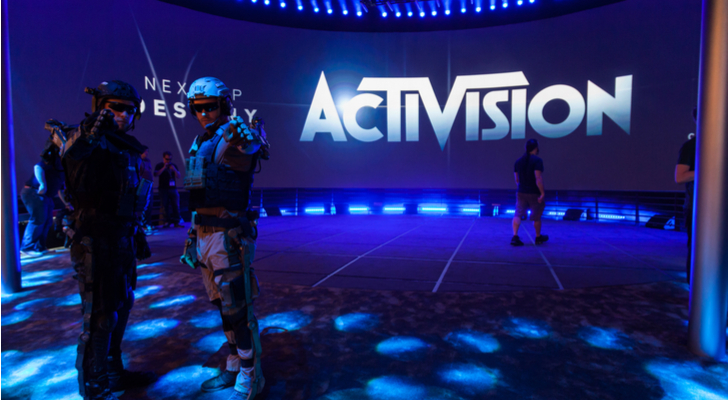In 2017, investing in the video game sector was easy money. The transition away from physical, disk-based games to online downloads was a major boon for video game publishers. In fact, Activision Blizzard, Inc. (NASDAQ:ATVI), Electronic Arts Inc. (NASDAQ:EA) and Take-Two Interactive Software, Inc. (NASDAQ:TTWO) raked in a glut of profit from the transition.
But this trio is in for a wake-up call in 2018. While video gamers will still continue the trend of migrating toward download-only game purchases, providing a major boost for the industry next year, in-game microtransactions (MTX) need to transform rapidly. MTX were hailed by the industry as a new cash cow. EA promised rising revenue from MTX in Star Wars Battlefront 2, and Activision’s Destiny 2 was heavily reworked to include a similar in-game economy with real money.
EA has already had its day of reckoning with microtransactions in Battlefront 2, as gamers revolted and refused to buy the game due to the “pay to win” nature of MTX implementation. EA was forced to remove MTX from Battlefront 2, with promises to reintroduce in-game purchases at a later date.
Activision stock was largely sheltered from this backlash, as the severity of MTX in its flagship Destiny sequel was not revealed ahead of the game’s September launch. However, with the release of the game’s first downloadable content (DLC), “Curse of Osiris,” Activision’s investment in MTX was fully revealed. Gamers once again revolted, resulting in a 75% drop in Destiny 2’s active player base.
EA has already seen negative analysts comments and downgrades due to it’s MTX fiasco. In fact, Cowen cut its earnings guidance and lowered its price target as a result of gamer backlash to the MTX situation in Battlefront 2.
The situation is a bit different for Activision stock, however. The company has several AAA video game titles that don’t rely heavily on MTX for revenue, yet. The Call of Duty series remains one of the most popular titles in the industry, and Overwatch is among the most popular e-sport titles in online gaming. Both garner some revenue from MTX, but neither game uses such transactions as pay-to-win or a major in-game feature a la Destiny 2.
But while the video gamer backlash against MTX in Destiny 2 could impact both Call of Duty and Overwatch, Activision has an ace in the hole for in game transactions. The company bought King games last year, which makes the lucrative Candy Crush series. Candy Crush is all about in-game transactions.
We’ll find out later this week how Activision will handle the Destiny 2 MTX situation later this week when Bungie (the Activision studio working on Destiny) updates its player base this Thursday. Furthermore, Activision stock investors will get a much broader picture of the potential impact to the bottom line in early February when the company releases its quarterly earnings report.

Click to EnlargeThere is considerable risk heading into Activision’s quarterly report. Bullish sentiment is running rampant on ATVI stock, with little thought about the MTX situation which is seen as mainly an EA problem.
Currently, Thomson/First Call reports that 20 of the 27 analysts following ATVI rate the shares a “buy” or better, with no “sell” ratings to be found. Meanwhile, the 12-month consensus price rests at $71.76, versus ATVI’s current perch near $67.
In short, there’s room for downgrades and price target cuts for Activision stock if the MTX situation gets worse.
Turning to the options pits, we find a near equal lack of caution. At last check, Activision stock’s February put/call open interest ratio rested at 0.71, with calls firmly in command heading into next month’s quarterly report. What’s more, nearly 7,000 contracts are open at the overhead $67.50 call strike — the second most popular in the February series.
Overall, February implieds are pricing in a potential post-earnings move of about 7% of Activision stock. This places the upper bound at $71.60, with the lower bound arriving at about $62.30.
2 Trades for Activision Stock
Put Spread: With the potential for lowered guidance due to a growing backlash against in-game MTX, there is heavy downside risk for Activision stock heading into earnings. Traders looking to bet that Wall Street is underestimating the potential impact of this video game revolution might want to consider a February $62.50/$65 bear put spread.
At last check, this spread was offered at 83 cents, or $83 per pair of contracts. Breakeven lies at $64.17, while a maximum profit of $1.67, or $167 per pair of contracts — a potential return of 100% — is possible if ATVI stock closes at or below $62.50 when February options expire.
Put Sell: If you’re looking for a more conservative play on Activision stock, then a February $57.50 put sell might be a way to capitalize on technical support. At last check, this put was bid at 42 cents, or $42 per contract.
As always, you keep the premium received as long as ATVI stock closes above $57.50 when February options expire. The downside is that should Activision stock trade below $57.50 ahead of expiration, you could be assigned 100 shares for each sold put at a cost of $57.50 per share.
As of this writing, Joseph Hargett did not hold a position in any of the aforementioned securities.
